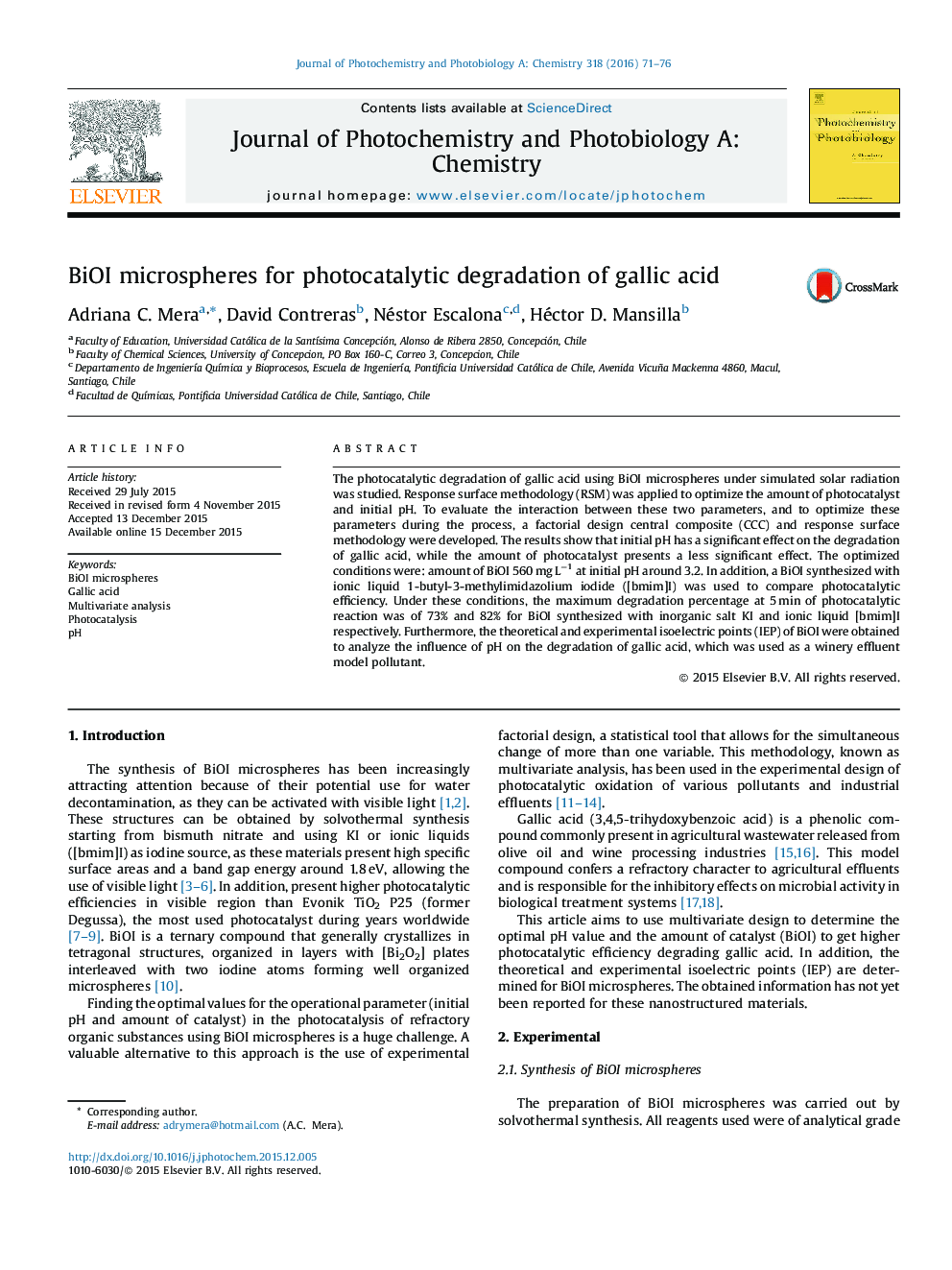| کد مقاله | کد نشریه | سال انتشار | مقاله انگلیسی | نسخه تمام متن |
|---|---|---|---|---|
| 26214 | 43940 | 2016 | 6 صفحه PDF | دانلود رایگان |
• The isoelectric point (IEP) of BiOI microspheres.
• Photocatalytic efficiency of BiOI microspheres.
• Photocatalytic degradation and mineralization of gallic acid using BiOI microspheres under simulated solar radiation.
• The optimized photocatalytic conditions were: amount of BiOI 560 mg L−1 at initial pH around 3.2.
The photocatalytic degradation of gallic acid using BiOI microspheres under simulated solar radiation was studied. Response surface methodology (RSM) was applied to optimize the amount of photocatalyst and initial pH. To evaluate the interaction between these two parameters, and to optimize these parameters during the process, a factorial design central composite (CCC) and response surface methodology were developed. The results show that initial pH has a significant effect on the degradation of gallic acid, while the amount of photocatalyst presents a less significant effect. The optimized conditions were: amount of BiOI 560 mg L−1 at initial pH around 3.2. In addition, a BiOI synthesized with ionic liquid 1-butyl-3-methylimidazolium iodide ([bmim]I) was used to compare photocatalytic efficiency. Under these conditions, the maximum degradation percentage at 5 min of photocatalytic reaction was of 73% and 82% for BiOI synthesized with inorganic salt KI and ionic liquid [bmim]I respectively. Furthermore, the theoretical and experimental isoelectric points (IEP) of BiOI were obtained to analyze the influence of pH on the degradation of gallic acid, which was used as a winery effluent model pollutant.
Figure optionsDownload as PowerPoint slide
Journal: Journal of Photochemistry and Photobiology A: Chemistry - Volume 318, 1 March 2016, Pages 71–76
